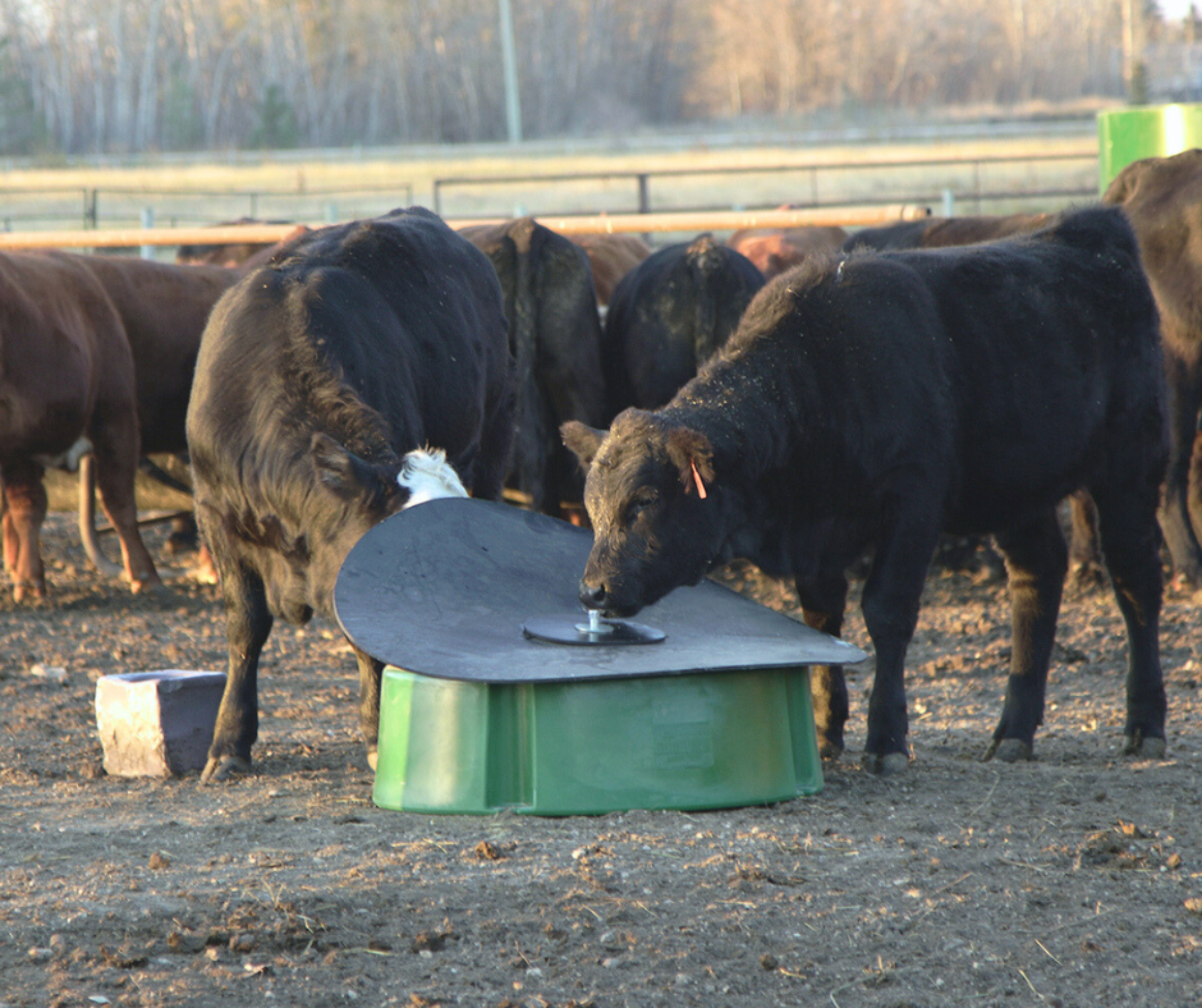Best Healthy Feed for Beef Cattle

Feeding beef cattle is part science and part art. Cattle farmers tend to have their own beliefs about healthy feed for beef cattle, and it seems every few years or so new research is produced advocating a specific system of feed.
Currently, the most common and healthiest options include:
1) Grain Supplement
Grain can get cattle growing quickly and can help cattle get fat. In fact, many farmers feed grains to growing cattle to reduce costs and get cattle ready sooner. Grain supplements are also a good solution for winters and for cattle that lack access to high-quality hay and grazing pastures. Supplementing grain can become especially helpful in drought conditions or other instances of pasture loss.
However, it's important not to get cattle too reliant on supplements, as this will discourage them from more nutritionally diverse pastures and foraging.
2) Hay
Hay can provide every important nutrient for cattle, but it must be picked at the height of its nutrient richness before it becomes too dry. To be a sustainable source for cattle, hat must also be carefully cured and stored to prevent rot and damage. To ensure that bales last longer, it’s also important to consider the way you feed. Using equipment such as a no-waste round bale feeder will ensure your bales will stay fresh longer, saving you time and money.
There are many hay varieties that offer good nutrition. Alfalfa hay, for example, has more calcium and phosphorus than grass hay, but some grass hay can be high in proteins. Most experts recommend mixing alfalfa with grass hay, rather than relying exclusively on alfalfa hay. Alfalfa hay is often recommended for dairy cattle but may not be a good fit for beef cattle since it can lead to bloating. Legume hay is another nutritious option for cattle, since it's high in protein.
3) Pasture and Forage
Forage and pasture can provide cattle with all the nutrients they need (unless the soil is depleted or the season is too early for rich grass growth). Pasture is also the most cost-effective solution for cattle feed. If you hope to feed your cattle with forage and pasture, it's important to test soil fertility and to maintain good watering to ensure plants are at their best nutritional density. You'll also want to keep an eye on the types of plants available and monitor their maturity and their overall condition.
4) Concentrates
Concentrates, such as oats, corn, wheat, barley, grain sorghum, wheat bran, and liquid supplements, are high in nutritional value and low in fiber. They have plenty of carbohydrates, but also come with a higher price tag than forages. One way to ensure you can save money when feeding concentrates is to use a mineral feeder for cattle that is built with high walls and durable material to handle anything that is thrown at it.
Concentrates can be great as a supplement, but carefully consider cattle needs and weights when offering this feed to prevent digestion issues.
Concentrates can be great as a supplement, but carefully consider cattle needs and weights when offering this feed to prevent digestion issues.
If you are offering your cattle the best feed possible, you may want to seek out quality livestock handling systems as well. Since 1988, Arrowquip has been a trusted name for loading chutes, stationary and portable handling systems, squeeze chutes and other solutions. Contact us today to find out how we can help with your livestock handling needs.




Comments
Join the Discussion
Comments
Very Helpful
It's a great source of knowledge; I think it will be helpful for lot of people who are looking for the best healthy feed beef cattle. Thank you very much for sharing this article, this is really helpful for me, thanks again and looking for more in future!
Great information
I want to get the best feed for my cattle
I really like how you mentioned that feeding beef cattle is both an art and a science. My brother is considering looking for feed dealers because he's thinking about buying some beef cattle to raise and make some money off of. I think it's a good idea to consider shopping from the best dealers to provide the animals with the best feed so they can be big and healthy. https://www.cliftonfeed.com/services